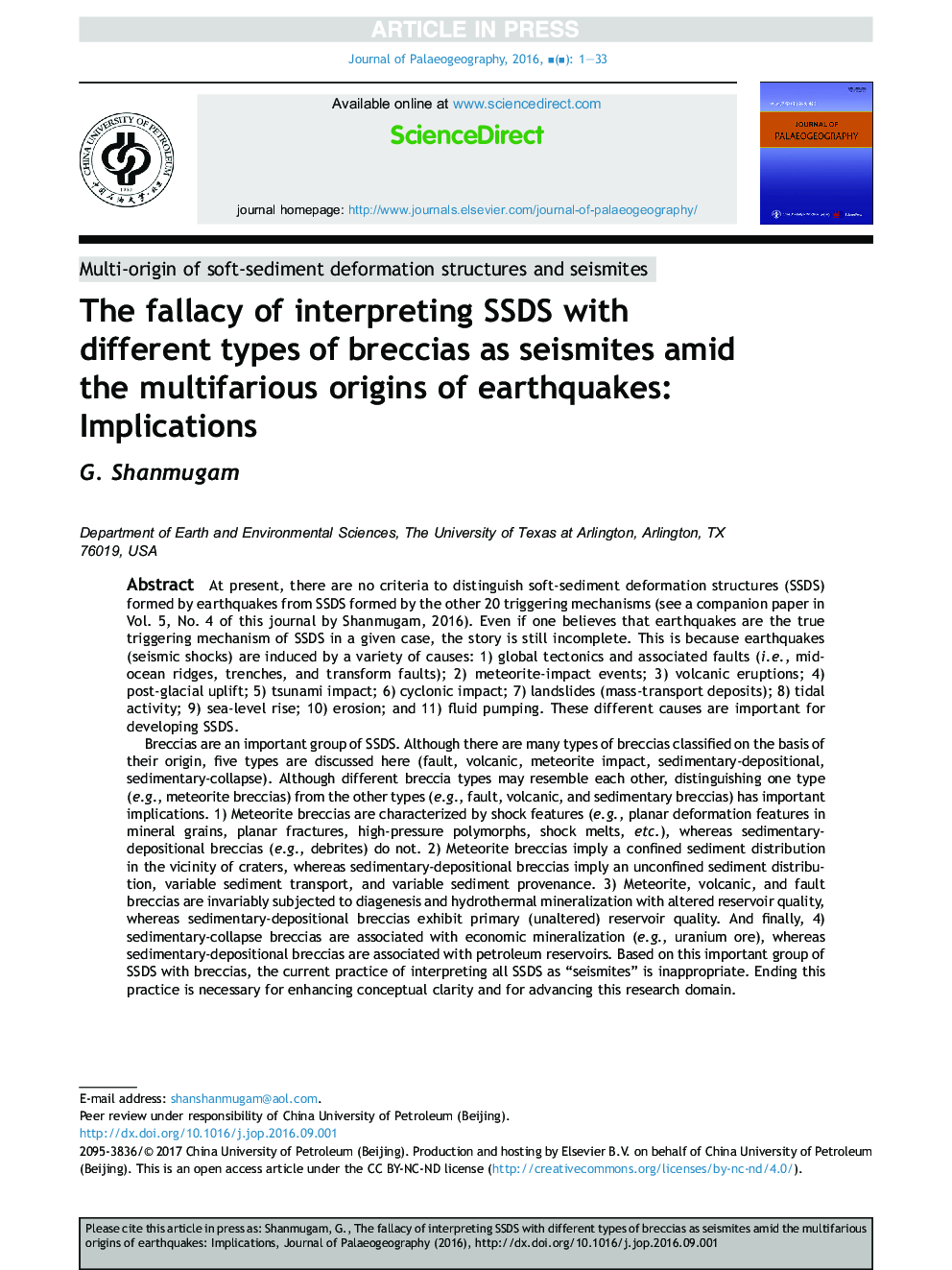| Article ID | Journal | Published Year | Pages | File Type |
|---|---|---|---|---|
| 8895350 | Journal of Palaeogeography | 2017 | 33 Pages |
Abstract
Breccias are an important group of SSDS. Although there are many types of breccias classified on the basis of their origin, five types are discussed here (fault, volcanic, meteorite impact, sedimentary-depositional, sedimentary-collapse). Although different breccia types may resemble each other, distinguishing one type (e.g., meteorite breccias) from the other types (e.g., fault, volcanic, and sedimentary breccias) has important implications. 1) Meteorite breccias are characterized by shock features (e.g., planar deformation features in mineral grains, planar fractures, high-pressure polymorphs, shock melts, etc.), whereas sedimentary-depositional breccias (e.g., debrites) do not. 2) Meteorite breccias imply a confined sediment distribution in the vicinity of craters, whereas sedimentary-depositional breccias imply an unconfined sediment distribution, variable sediment transport, and variable sediment provenance. 3) Meteorite, volcanic, and fault breccias are invariably subjected to diagenesis and hydrothermal mineralization with altered reservoir quality, whereas sedimentary-depositional breccias exhibit primary (unaltered) reservoir quality. And finally, 4) sedimentary-collapse breccias are associated with economic mineralization (e.g., uranium ore), whereas sedimentary-depositional breccias are associated with petroleum reservoirs. Based on this important group of SSDS with breccias, the current practice of interpreting all SSDS as “seismites” is inappropriate. Ending this practice is necessary for enhancing conceptual clarity and for advancing this research domain.
Keywords
Related Topics
Life Sciences
Agricultural and Biological Sciences
Soil Science
Authors
G. Shanmugam,
